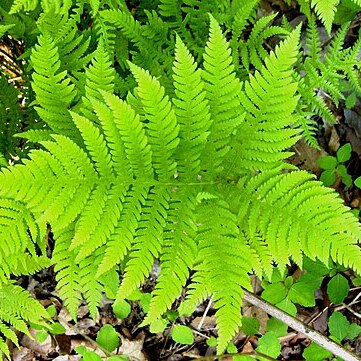Caudex wide-creeping or short and suberect; fronds pinnate with deeply lobed pinnae which are connected with each other by a wing along the rachis, the wing forming, between one pinna and the next, a ± semicircular lobe containing a branched vein arising directly from the rachis; frond-form either deltoid or (in sole Malesian species) lanceolate with lower pinnae gradually reduced; veins in pinna-lobes simple or branched, tips of distal ones only reaching margin; sori subterminal on veins or their branches, exindusiate or with a very small indusium; sporangia often bearing short acicular or capitate hairs; lower surface of rachis and costae of pinnae copiously scaly; scales pale, thin, narrow, with slender spreading marginal hairs and a hair-tip; larger, darker and often less hairy scales present at base of stipe; surfaces of frond bearing acicular and capitate hairs.
Stems long-creeping, 1--4 mm diam. Blades 2--3-pinnatifid in proximal part, broadest at base, apex gradually reduced; pinnae deeply lobed, mostly strongly adnate, connected by wing along rachis, wing sometimes forming lobe between pinnae and served by vein arising from rachis; costae not grooved adaxially; buds absent; veins free, simple or often forked, distal veins of segment reaching margin or nearly so; indument abaxially of unbranched, unicellular hairs, rachises and costae also with spreading, ovate-lanceolate scales. Sori round to oblong, supramedial to inframarginal, lacking indusia; sporangial capsule often bearing stalked glands or hairs. x = 30.

